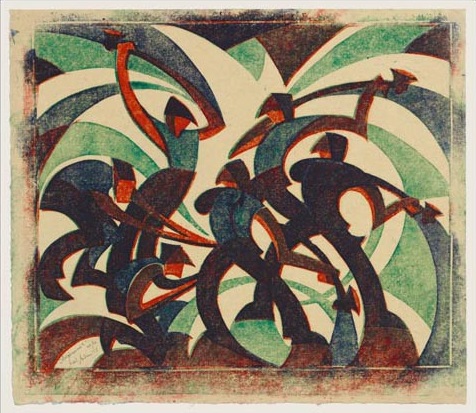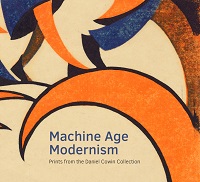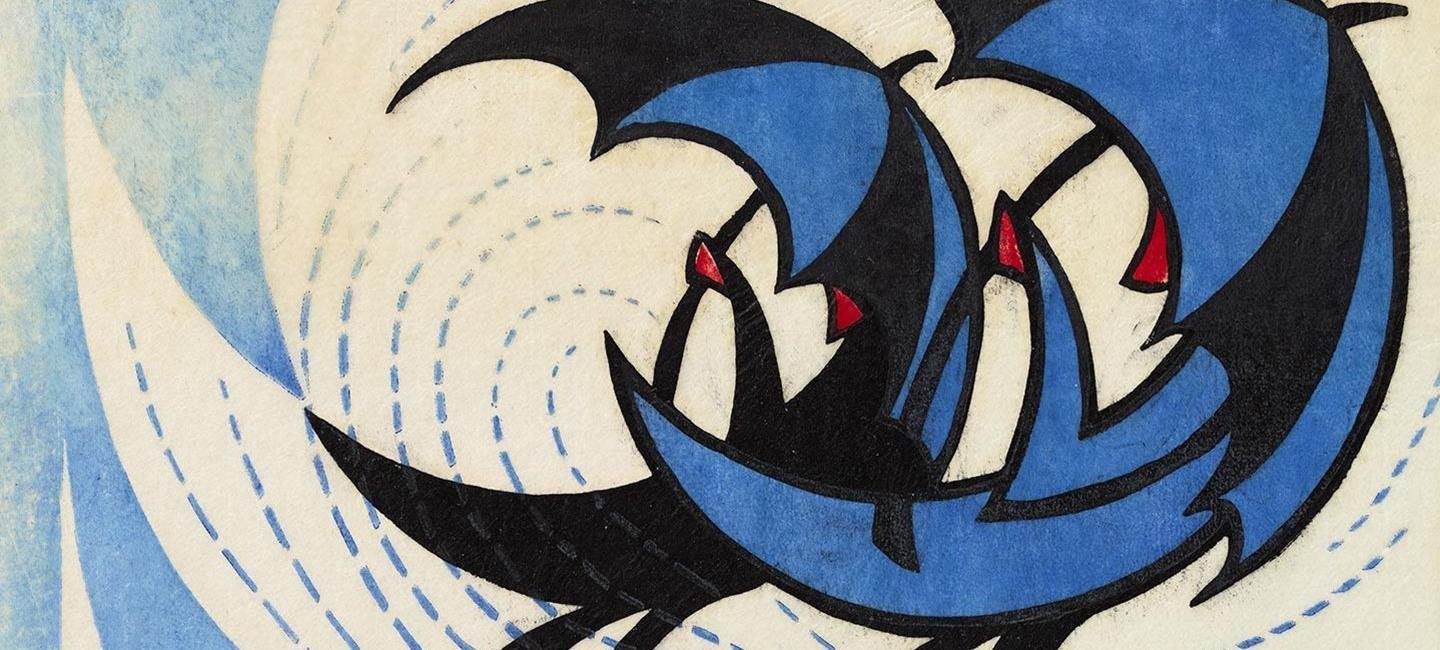
FEBRUARY 28–May 17, 2015
ABOUT THE EXHIBITION

Sybil Andrews (English, 1898–1992)
Sledgehammers
1933
Color linocut on paper
Daniel Cowin Collection © Glenbow, Calgary, 2014
Machine Age Modernism, a special presentation of prints from the Daniel Cowin Collection, captures the tumultuous aesthetic and political climate of the years before, during, and after World Wars I and II in Britain. Today known as the Machine Age, this was an era that embraced industry and mechanization. New modes of communication and transportation infused with the aura of speed and efficiency—radios, trains, automobiles, airplanes—transformed the landscape of the country.
This exhibition features a wide range of vanguard imagery produced during the period, including themes such as cityscapes, war, industrial technology, rural farming, sport, and leisure activity. During World War I, two British printmakers, Edward Wadsworth and C. R. W. Nevinson, depicted Britain’s military efforts, portraying soldiers at the front, war ships, and manufacturing projects in support of the war effort. In the following decades, another group of artists began to explore their changing world with a new medium, the linocut. Students at the progressive Grosvenor School of Modern Art in London learned to make prints from common linoleum flooring. Sybil Andrews, Claude Flight, Lill Tschudi, and others made technically experimental prints whose vibrant colors and geometric forms bridged abstraction and representation. They chose to embrace craft-like execution that encouraged simplicity. The works featured in this exhibition are filled with the energy and excitement of the Machine Age and exemplify how artists found inspiration in the modern world.
All works in the exhibition are from the Daniel Cowin Collection.
PRINTMAKING AND WORLD WAR I
As Britain entered World War I and struggled with political unrest, its artistic community was still dominated by the conservative styles of the previous century. Artists like Edward Wadsworth and C. R. W. Nevinson belonged to a younger generation that was willing to challenge the establishment in order to express what they saw as a “new reality”––a world subservient to the rhythms of the machine and dominated by industrial technology. Both artists served in the war effort, Wadsworth as a member of the Royal Naval Reserve and Nevinson as an ambulance driver and a private in the Army Medical Corps. Both sought different ways to visually document the war, including woodcuts of painted war ships, drypoints of soldiers marching to the trenches, and lithographs of airplane manufacture. Employing a new stylistic language, these figures moved British printmaking into new realms of creative expression.
THE LINOCUT MOVEMENT
Claude Flight began teaching linocut classes at London’s Grosvenor School of Modern Art in 1926, a time of immense social and economic turmoil that witnessed vast technological advances as well as economic depression. While Flight encouraged depictions of modern life, or as he termed it the “art of to-day,” and an aesthetic that balanced abstraction and representation, he also strove to promote a return to craft, and forms of art that were affordable to the masses. A linocut is made by cutting one separate block per color and then printing each color block on top of the image left by the previous one, creating dynamic compositions with vibrant colors. Among the most gifted of the practitioners was Sybil Andrews, whose powerful imagery balanced the energy of urban life and the cyclical rhythms of rural labor. The Swiss Lill Tschudi, like Andrews, depicted physical exertion from farm life to team sports and leisure activities.

Machine Age Modernism is accompanied by a fully illustrated catalogue with essays by Jonathan Black, a senior research fellow in the history of art at Kingston University in London, and Jay A. Clarke, Manton Curator of Prints, Drawings, and Photographs at the Clark.
